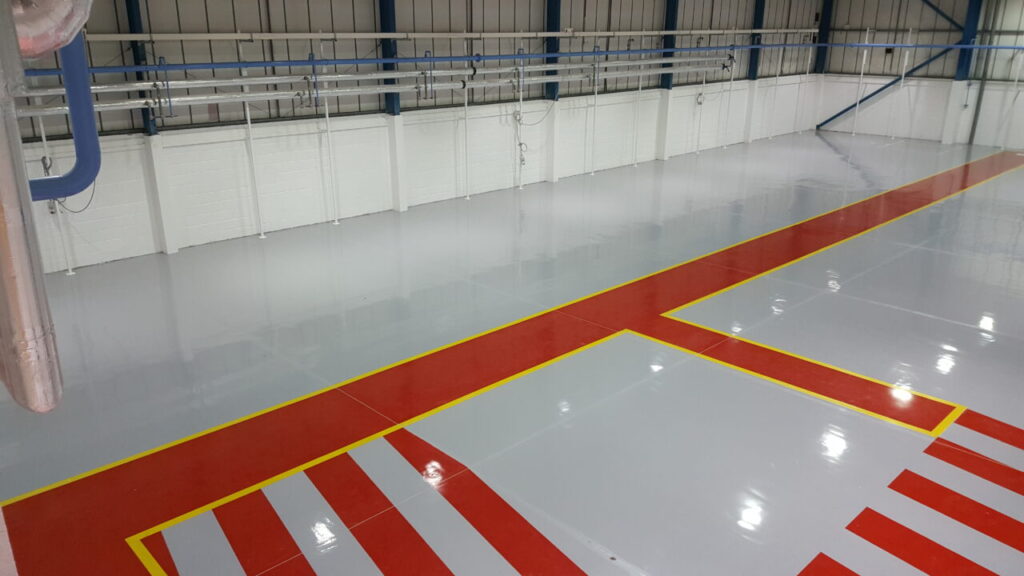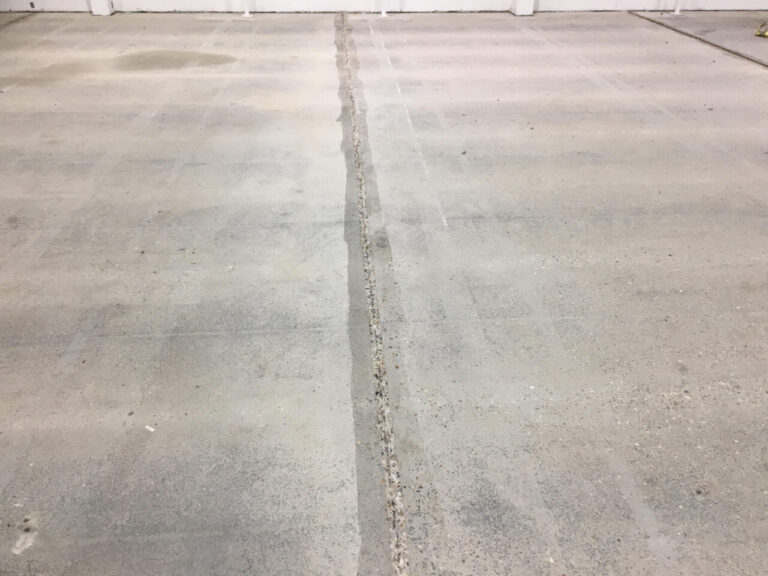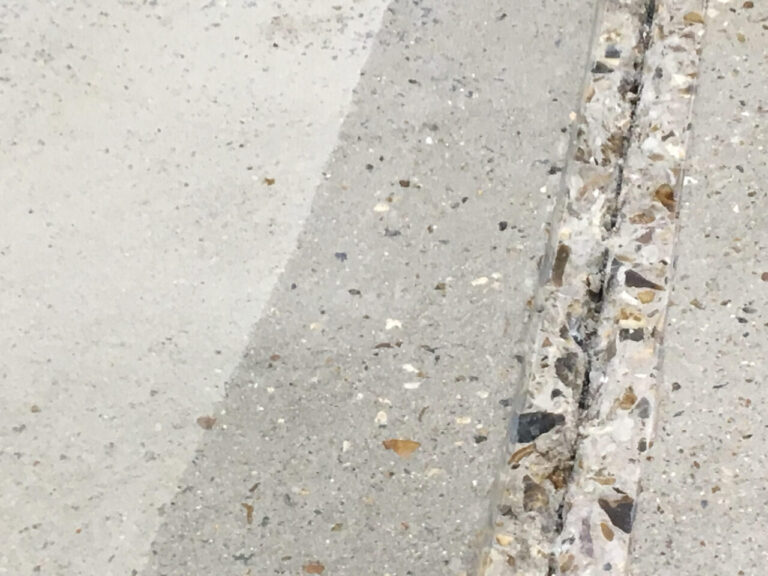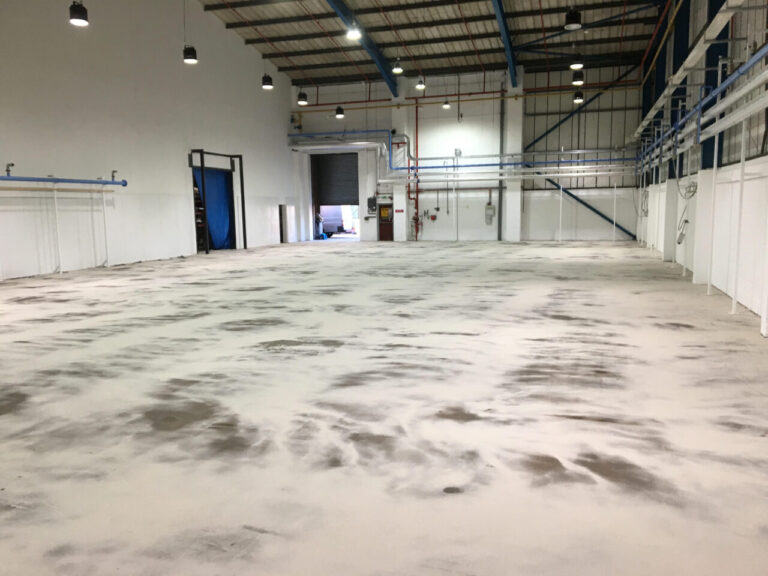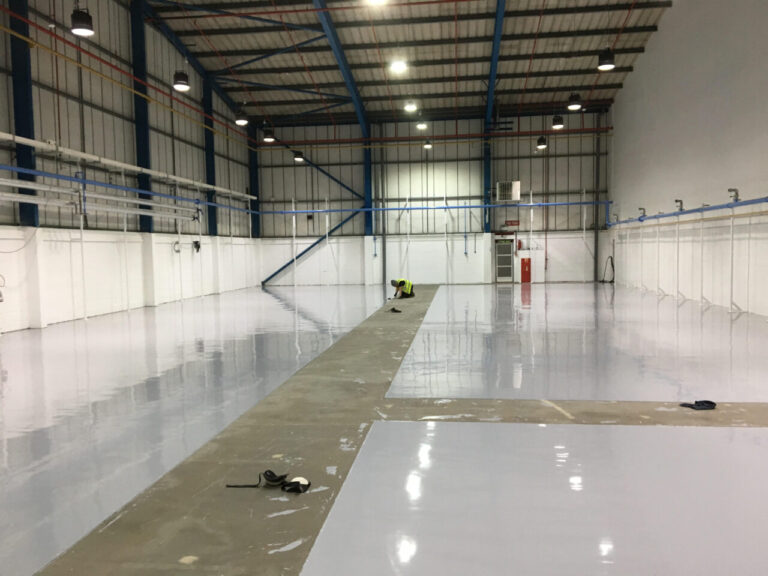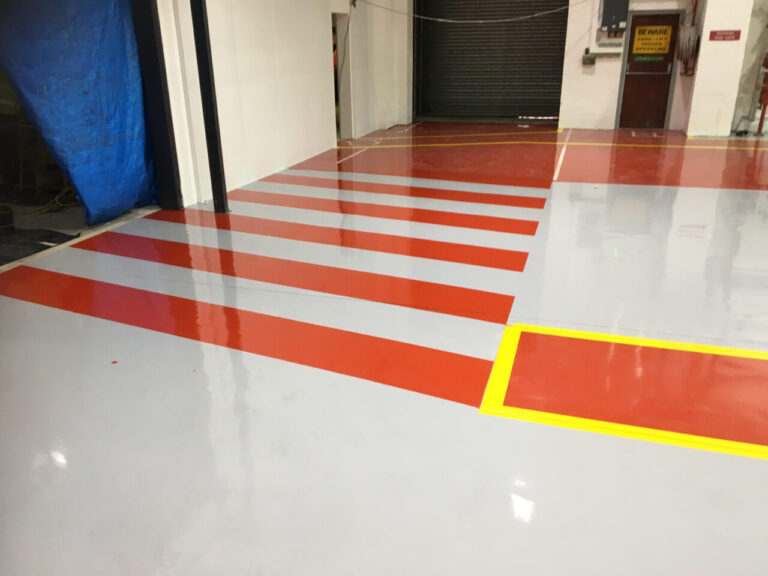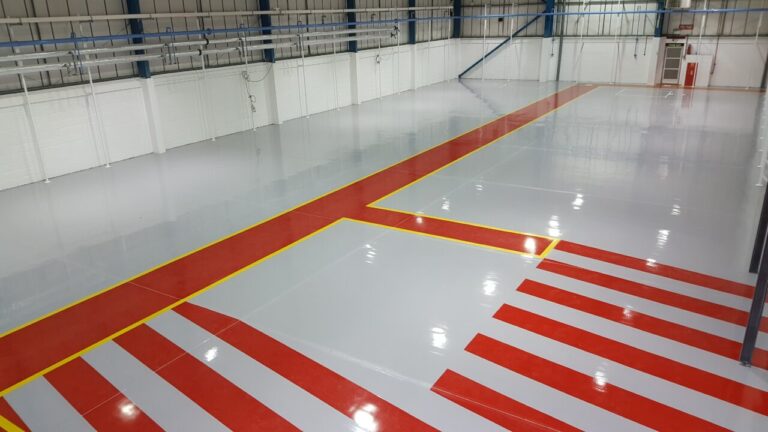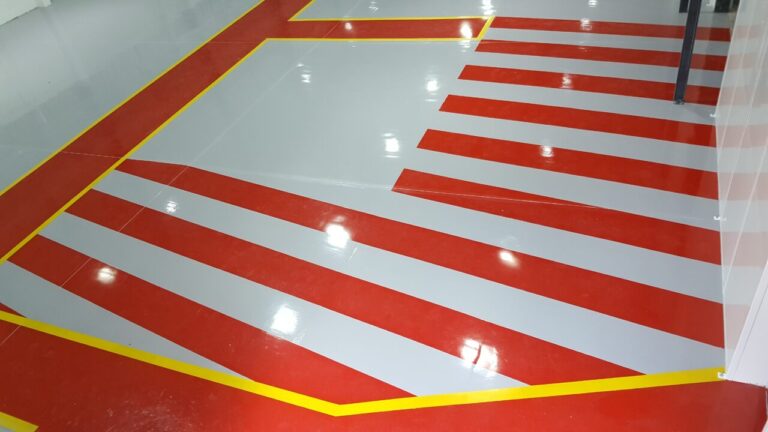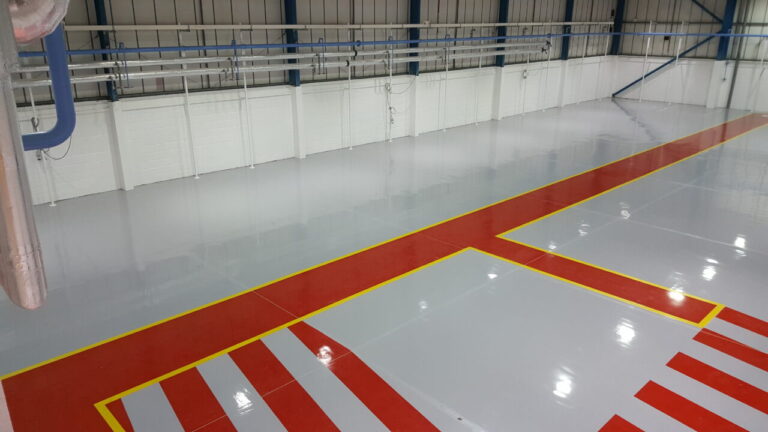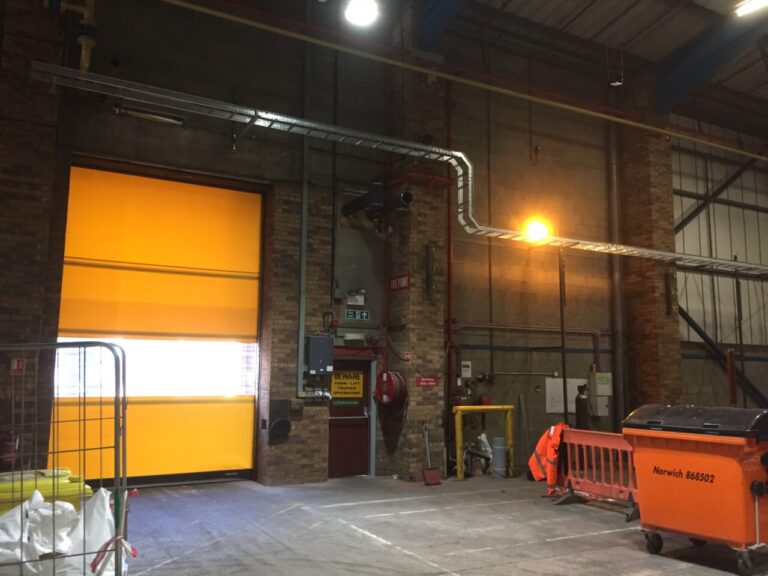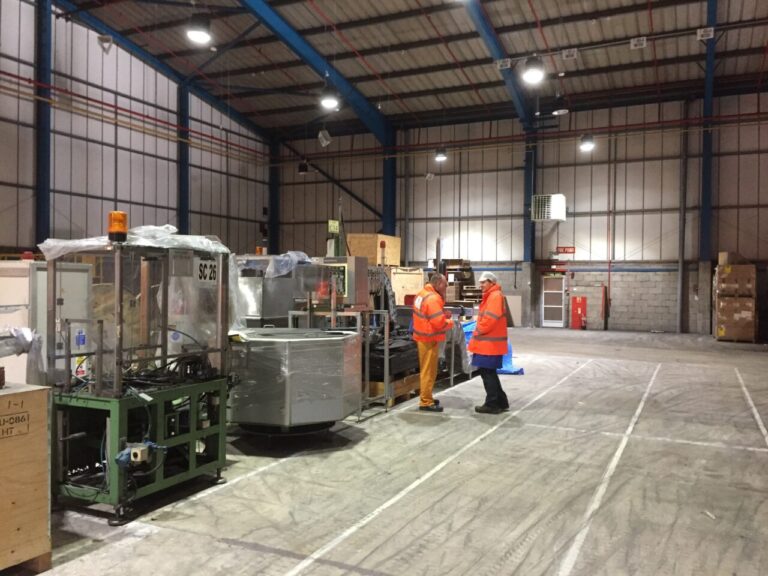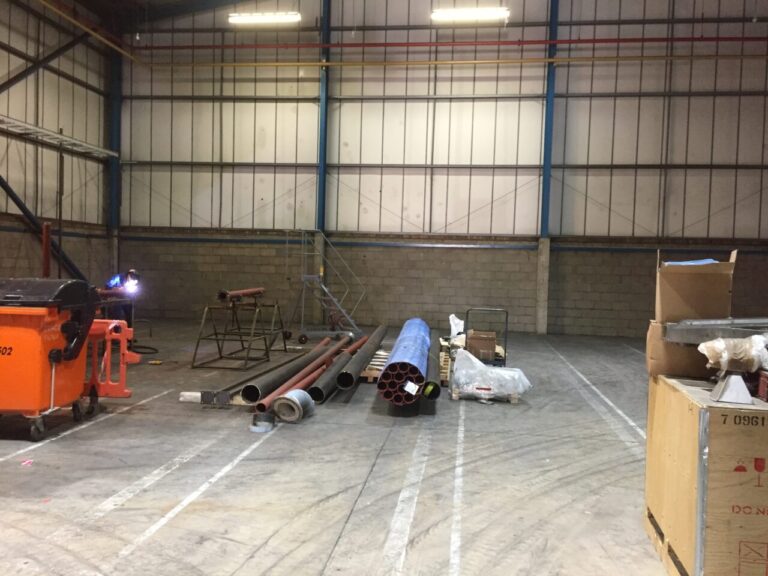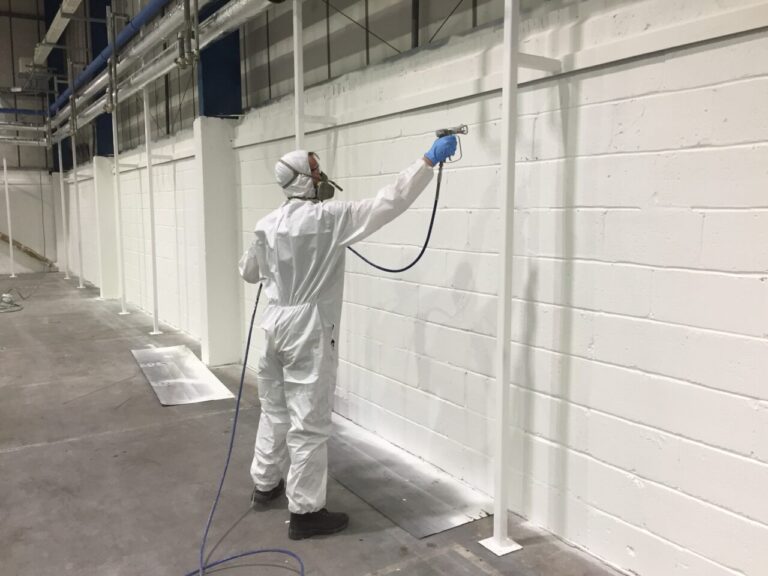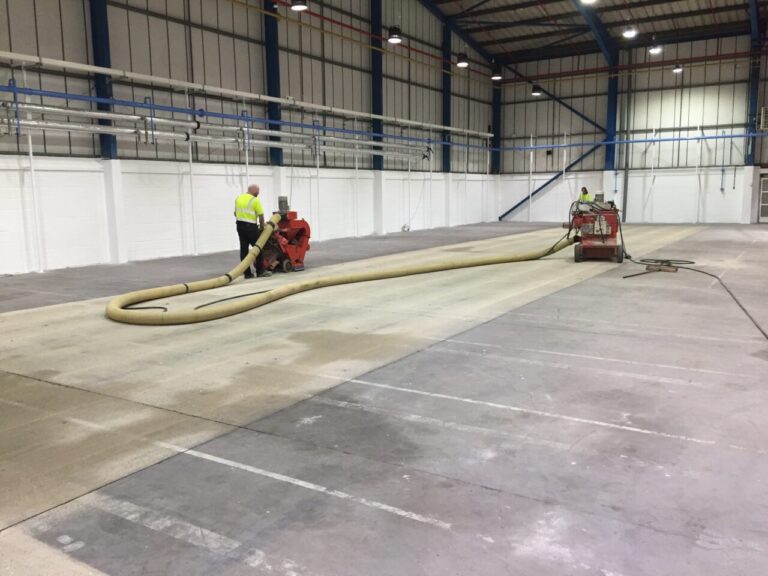THE PROBLEM
Due to the expansion of the manufacturing site a warehouse area was to be converted to a production area. This meant that a hygienic coating to the same standard as a food production environment was required on the walls and a durable resin flooring solution.
SOLUTION
For the walls we proposed the application of Sika’s proven hygienic coating system – formerly Steridex/Sterisheen. For the resin flooring we proposed the application of Remmers new epoxy self-smoother OS Color.
Initially in preparation for the application of the hygienic coatings the walls were abraded and de-nibbed, prior to being vacuumed clean to ensure excellent adhesion of the new coatings.
All surface not being coated were thoroughly masked to protect from overspray.
Filling minor defects using a filler
The blocks were first sealed using Sika bonding primer applied by method of airless spray and back rolling. Once cured minor defects were filled using a twin component filler. This attention to detail is essential to ensure a seamless and hygienic finish.
Sikagard 403W was then applied by the same method of airless spraying and back rolling to work into the profile of the blocks. This coating is much more flexible than conventional paints offering improved crack and impact resistance.
Finally a coat of Sikagard 207W was applied to give a mid-sheen finish that would be easy for the clients cleaning teams to maintain.
Preparing the floor
Once the hygienic coatings works had been completed the resin flooring works could commence. Initially the floor was prepared by method of vacuum enclosed track blasting to remove contamination and provide and excellent mechanical profile for the new resin floor to adhere to.
There were some damaged joint arises and previous poor repairs in the floor. These were isolated using a vacuum controlled floor saw prior to being broken out using vibration damped breakers. These areas were then reinstated using a high strength epoxy mortar.
Double priming the floor
In preparation for the epoxy self-smoother the floor was double primed using Remmers Epoxy MT100. This had the benefit of forming a liquid DPM giving peace of mind as the presence and condition of a damp proof membrane was unknown. A quartz aggregate was broadcast into the second coat of primer to ensure that the overcoat window of the primer was not exceeded, thus ensuring excellent adhesion between the layers of the new resin floor.
Remmers OS Color was then applied by method of notched trowel to a thickness of 3mm to provide a durable and hard wearing resin finish. The walkways were installed in the same material as opposed to coatings on top due to the high number of forklift movements.
Finally expansion joints were reflected using a vacuum controlled floor saw and sealed using Remmers Multi Sil NUW elastomeric joint sealant.

